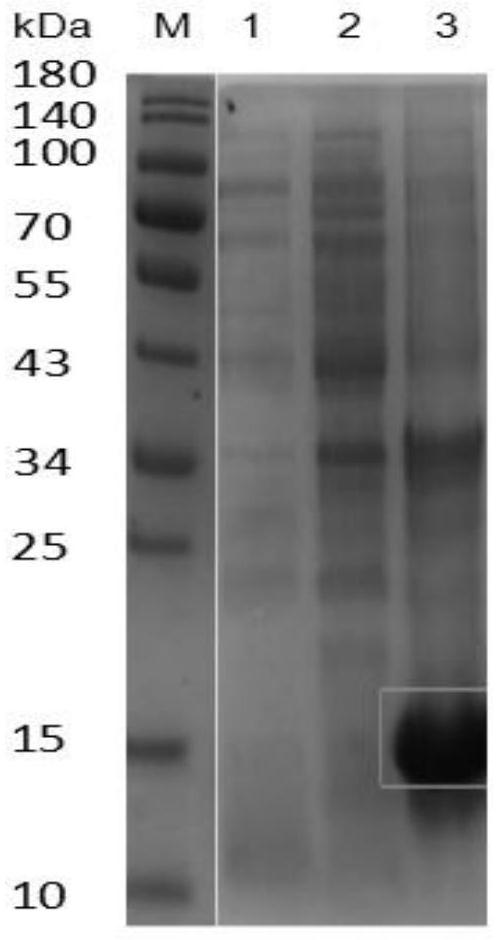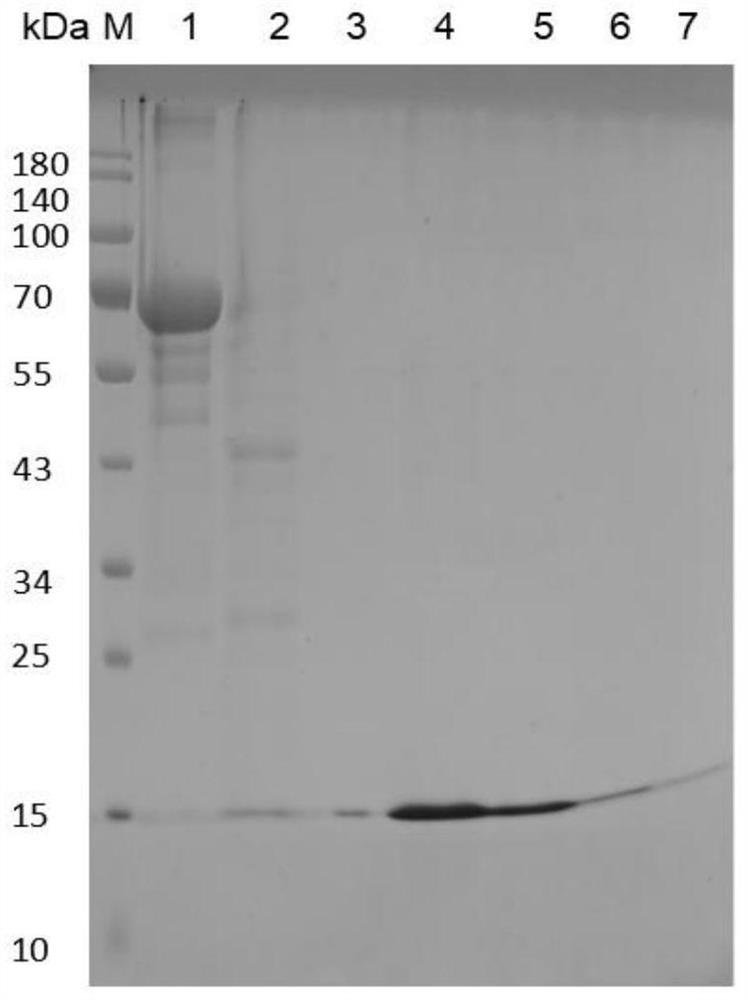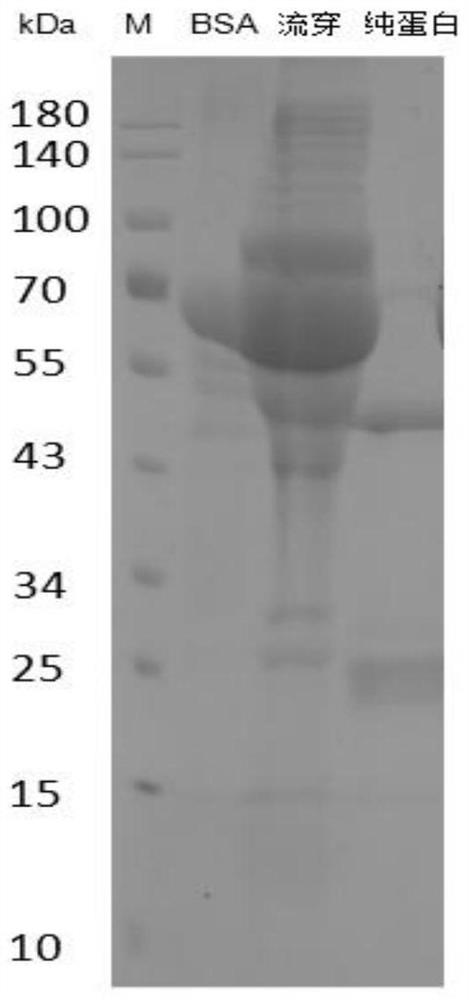Method for detecting peste des petits ruminants virus antibody by double-antibody blocking ELISA (enzyme-linked immunosorbent assay) method
A PPR, double-antibody technology, applied in the fields of resisting vector-borne diseases, measuring devices, biological tests, etc., can solve the problems of insufficient fast and accurate detection of PPR antibody detection products, and achieve the improvement of the level of disease prevention and control technology , easy to promote the application, the effect of accurate promotion of the application
- Summary
- Abstract
- Description
- Claims
- Application Information
AI Technical Summary
Problems solved by technology
Method used
Image
Examples
Embodiment 1
[0015] Example 1 Preparation of Peste des petits ruminants virus N protein antigen
[0016] 1 Experimental material
[0017] Escherichia coli DH5a, BL21 strains, and Marker were purchased from Beijing Transgen Biotechnology Co., Ltd.; restriction enzymes EcoR I and Xho I were purchased from Dalian Bao Bioengineering Co., Ltd.; protein purification column Ni Sepharose FF was purchased from GE Healthcare Life Science Company; serum Samples are kept for this laboratory.
[0018] 2Transformation, expression and identification of protein expression plasmids
[0019] According to protein sequence https: / / www.ncbi.nlm.nih.gov / gene / 3119775
[0020] Synthetic template, total length is 1575bp (SEQ ID NO.1), according to molecular biology method, use PCR to amplify N gene fragment, use restriction endonuclease EcoR I and Xho I to clone this fragment on prokaryotic expression vector pET28a, pass The plasmid was extracted after restriction enzyme digestion and nucleotide sequence iden...
Embodiment 2
[0041] Example 2 Preparation, purification and horseradish peroxidase labeling of rabbit polyclonal antibody against N protein
[0042] The purified N protein was used to immunize New Zealand white rabbits. After 6 immunizations, the serum was collected and the titer was >10^5 determined by ELISA. Finally, all serum was collected, and the antibody was purified by saturated ammonium sulfate precipitation and analyzed by SDS-PAGE. Then carry out horseradish peroxidase labeling according to the sodium periodate method described by Guo Chunxiang et al. [6] , add 100 μl calf serum and 500 μl glycerol, and store at -20 degrees after mixing.
Embodiment 3
[0043] Embodiment 3 Blocking method ELISA coating antigen optimal concentration and enzyme conjugate antibody optimal dilution selection
[0044] Determine the optimal concentration and optimal dilution according to the square matrix method. Using N protein as the coating antigen, N protein solutions with final concentrations of 1.0, 3.0, 6.0 and 9.0 μg / ml were prepared respectively, and the HRP-labeled antibodies were diluted to 1: 400, 1: 800: 1: 1600: 1: 3200, coat 96 microwell plates with prepared N protein solution, overnight at 4°C, block with 1% BSA in PBS (pH 7.2) for 3h, wash with PBST After 3 times, 50 μl of the above diluted enzyme-labeled antibodies were added, and 50 μl of negative serum samples were added to the corresponding wells, and the samples were repeated 3 times. Warm bath at 37°C for 1 h, shake off the liquid in the wells, wash 5 times with PBST, add color developing solution and keep in the dark for 15 min, add stop solution, measure the OD value of eac...
PUM
 Login to View More
Login to View More Abstract
Description
Claims
Application Information
 Login to View More
Login to View More - R&D
- Intellectual Property
- Life Sciences
- Materials
- Tech Scout
- Unparalleled Data Quality
- Higher Quality Content
- 60% Fewer Hallucinations
Browse by: Latest US Patents, China's latest patents, Technical Efficacy Thesaurus, Application Domain, Technology Topic, Popular Technical Reports.
© 2025 PatSnap. All rights reserved.Legal|Privacy policy|Modern Slavery Act Transparency Statement|Sitemap|About US| Contact US: help@patsnap.com



